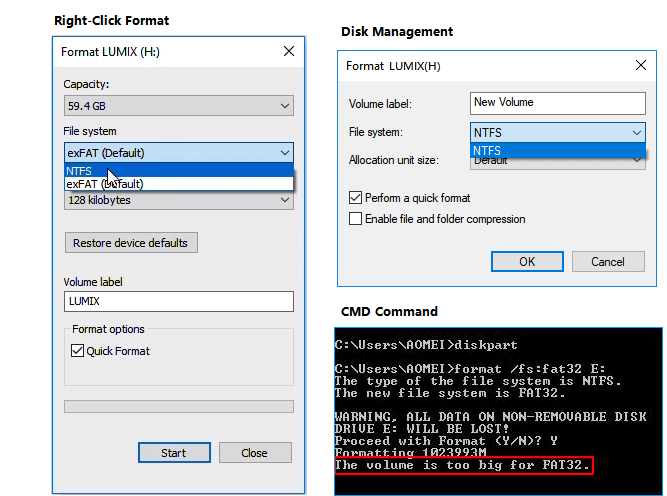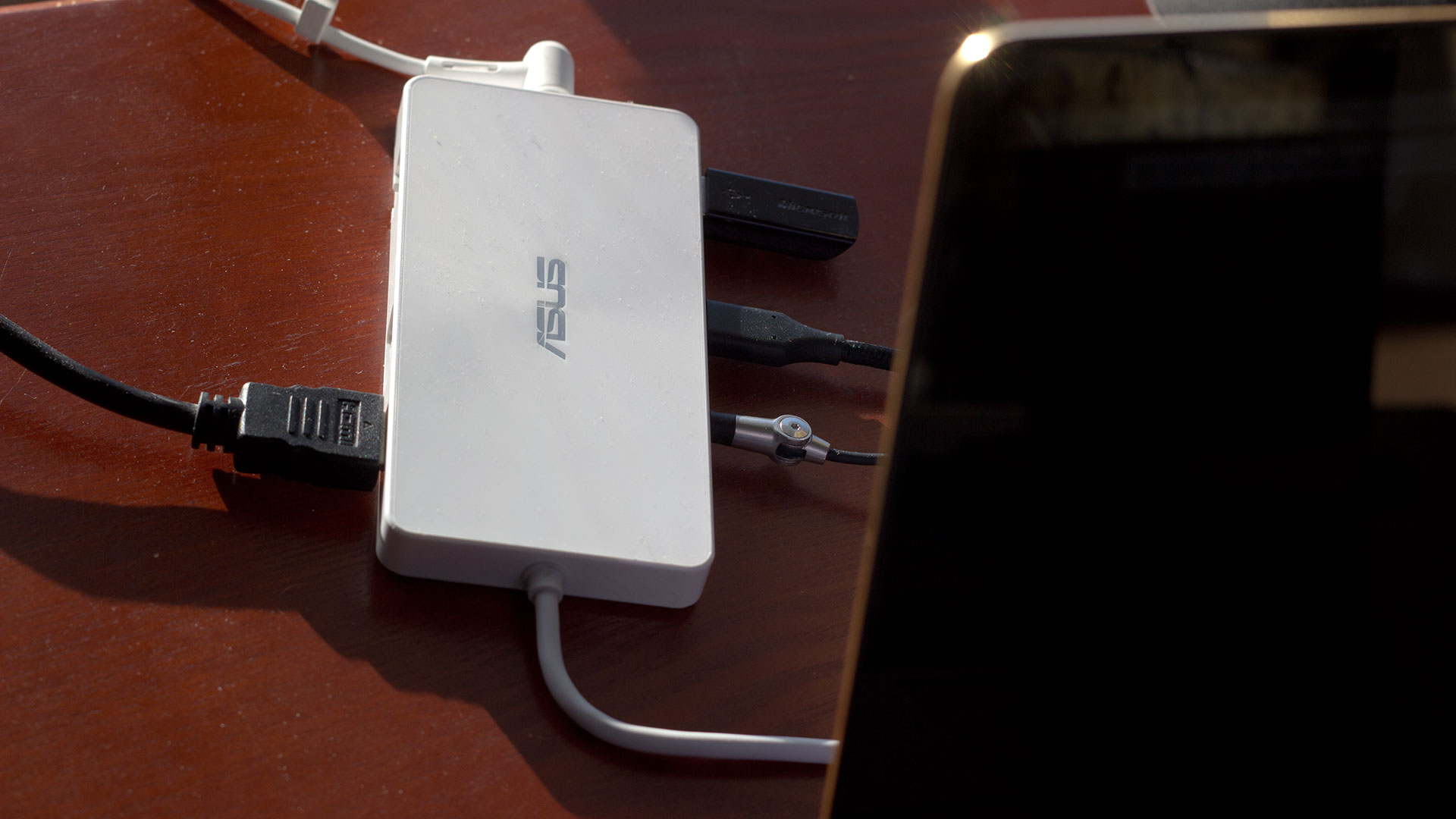

SD cards of all shapes and sizes (microSD, miniSD or SD) are used in mobile devices like smartphones, tablets, digital cameras, surveillance cameras and so on. How to format SD cards? Answer: using exFAT If you are using a mobile device, it is safe to assume that it will work using exFAT or FAT32 and not when using NTFS. Most digital cameras and other smart devices do not work with NTFS either. For example, Android smartphones and tablets cannot use NTFS unless you root them and modify several system settings. The biggest downside is that mobile devices tend not to work with the NTFS file system. Linux has worked well with NTFS for some time now, but Mac OS X does not unless you install third-party drivers. This file system works with all versions of Windows, as well as Xbox One consoles. The biggest downside is compatibility with mobile devices. Another upside is an increase in speed when transferring data when compared with FAT32. Also, it adds more features like support for setting permissions and other useful things for modern computers. NTFS fixes the downsides of the FAT32 file system regarding maximum file size and partition size. It's biggest downside is the lack of a journaling feature, which makes it easy to overcome data corruption. Another upside is the increase in speed when transferring data when compared with FAT32. Another advantage is that it keeps the high compatibility with many operating systems and devices. We noticed that exFAT was always faster than FAT32, while NTFS tended to be faster too, sometimes by a more significant margin, but not in all measurements.ĮxFAT fixes the downsides of the FAT32 file system regarding maximum file size and partition size. We wanted to make a speed comparison between the three file systems, so we took three different flash drives and ran speed benchmarks on them: Kingston DataTraveler Elite G2, Kingston DataTraveler microDuo 3C, and IronKey D300.įirst we took the Kingston DataTraveler Elite G2, formatted using FAT32, exFAT and NTFS, and after each format, we ran CrystalDiskMark, to see the speed that it measures.

Also, if you need the characteristics of each file system, read these tutorials: If you need a guide on how to format storage devices using a Windows computer, read this tutorial: How to format an SD Card, a USB memory stick or a partition, in Windows.
/GettyImages-136612668-5c640cc5c9e77c00010a4ff4.jpg)
How to format disc partitions for HDDs and SSDs? Answer: using NTFS (unless you are using Linux or Mac).How to format USB external hard drives? Answer: using NTFS (unless used on Macs).

How to format USB memory sticks? Answer: using exFAT.How to format SD cards? Answer: using exFAT.


 0 kommentar(er)
0 kommentar(er)
